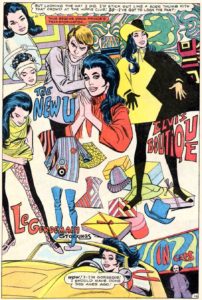Gold, Silver, and Bronze? It’s not the Olympics but the ages of comic books. This is the final part in a crash course on comic book lingo that will help you navigate the comic book store and that pile of old comics in the garage.
THE AGES
When you travel to a comic book con or look at the comic archives in a shop, you may see boxes labeled Golden, Silver, Bronze, or Modern—these are the American comic book ages.
Golden – Late 1930s to Early 1950s
This period begins with World War II so it’s no surprise that the superhero genre took hold very quickly. This period hosts the introduction of our most recognized superheroes: Superman, Batman, Captain America, Wonder Woman, and Captain Marvel.
After the war, superheroes weren’t as much of a draw. To maintain readership, comics shifted genres to sci-fi, Westerns, war, romance, crime, and horror.

Silver – 1956 to 1970s
The success of a new superhero, The Flash, is often considered the beginning of the Silver age, but I think it was more the formation of the Comics Code Authority (CCA). A concerted effort was put into reviving the superhero genre to reverse the “negative influences” the crime and horror genres were perceived to have had on America’s youth.


Comics of note during this period:
- Earth One, DC Comics
- The Justice League of America, DC Comics
- The Fantastic Four, Marvel
Bronze – 1970 to 1985
No single event marks the beginning of this age except for a general shift cultural attitude. Coming out from under the paranoia of the CCA, stories became darker and dealt with social issues like racism, drug use, poverty, and environmentalism.
Many of the major forerunners of comics began to retire, floppies moved from the newsstand to storefronts, and independents were able to enter the market more freely.

Comics of note during this period:
- Conan the Barbarian
- Amazing Spider-Man #121-122, Marvel Comics
- John Carter, Marvel Comics
Modern – 1985 to Present
The closer you get to the present, the harder it is to define the beginning and end of an age. The Modern age is definitely entrenched with the features introduced in the Bronze. Independent publishers are prolific, artists gain more individual notoriety, and the medium is more adult and dark. Horror returns as well as fantasy.
One common characteristic is the rise of the anti-hero. “Hellblazer,” “The Sandman,” and “Spawn” are great examples.

Comics of note in this period:
- Batman: The Dark Knight Returns, DC Comics
- Watchmen, DC Comics
- Maus by Art Spiegelman
I’ll Give You a Topic
In 1968, creators took away Wonder Woman’s superpowers and made her more like the everyday woman. How do you think this came across to the everyday women of that day?

For more on comic book lingo, see:


